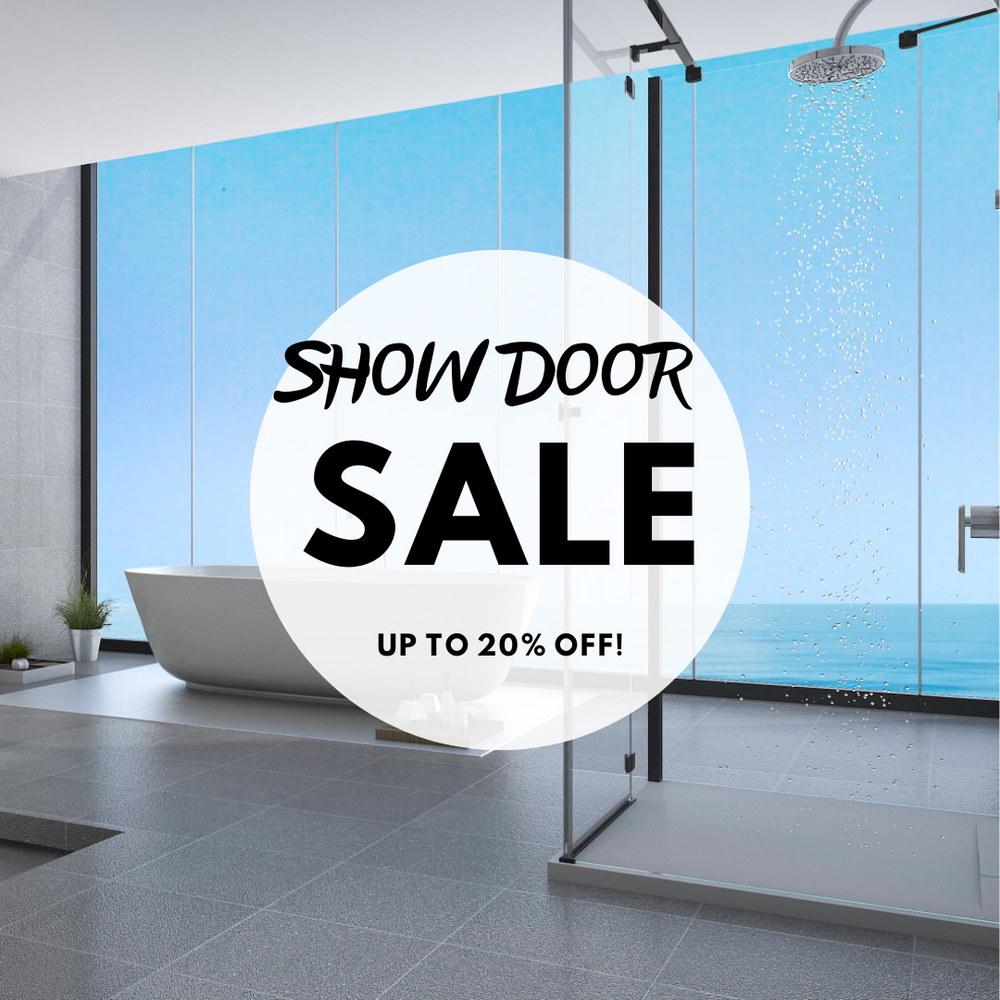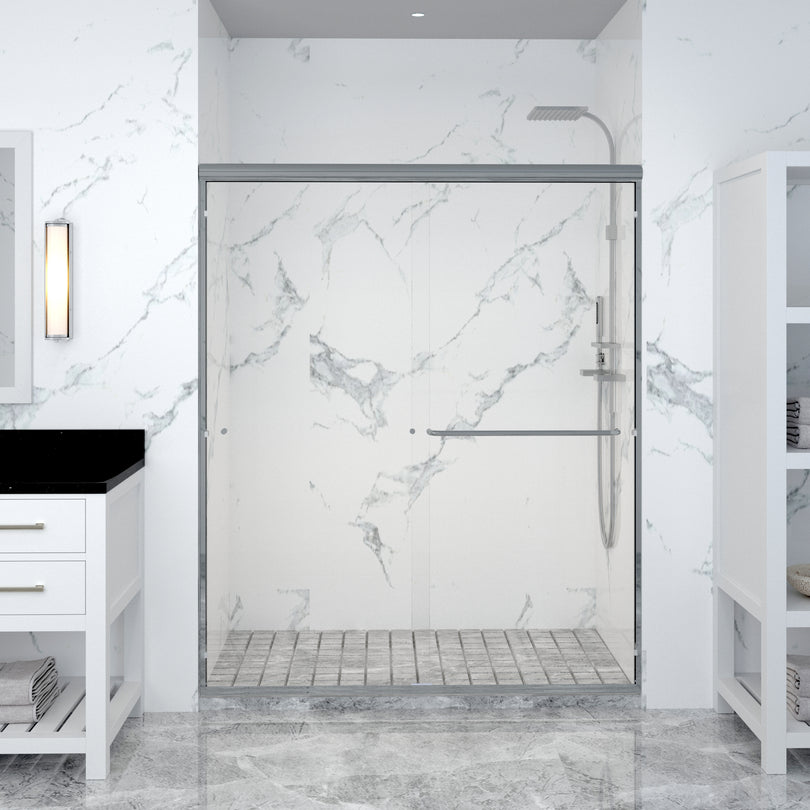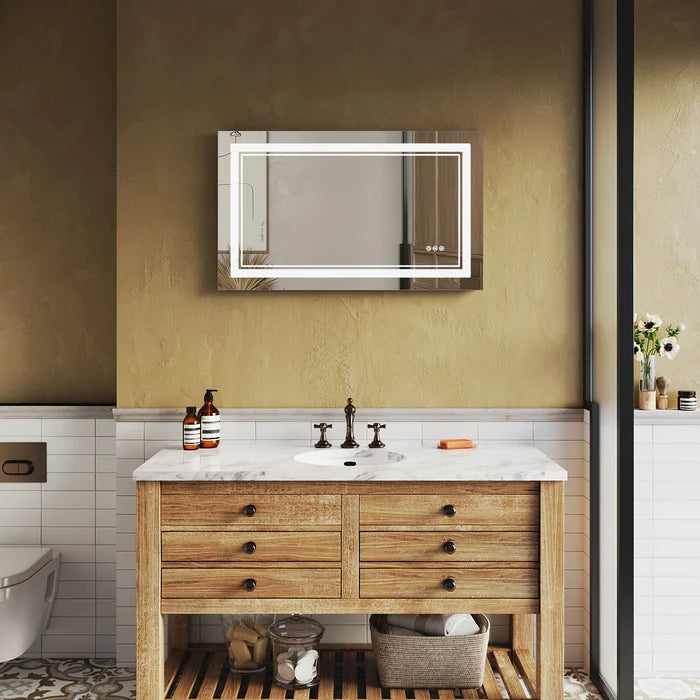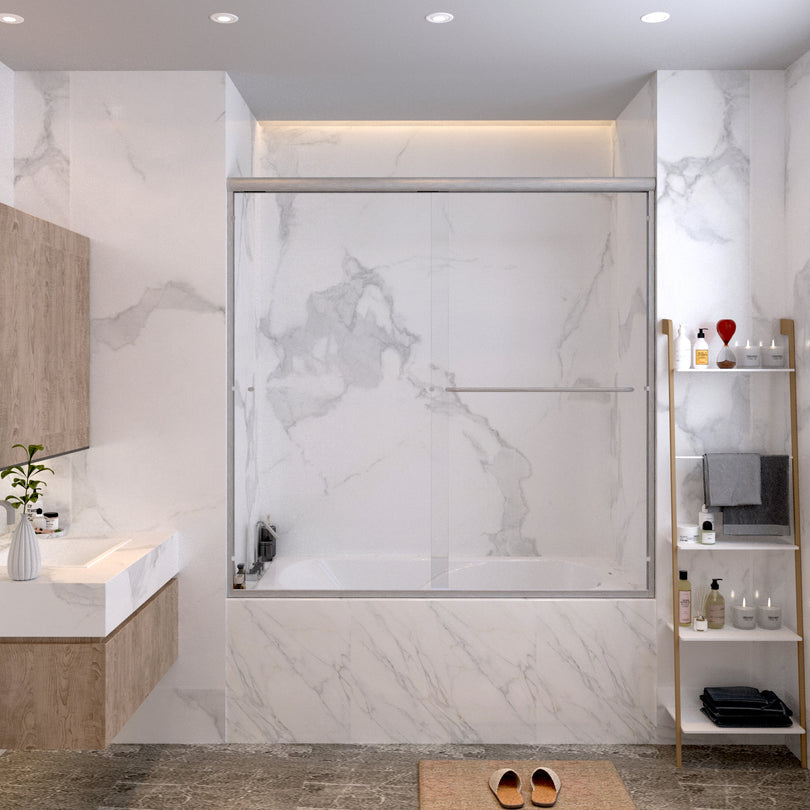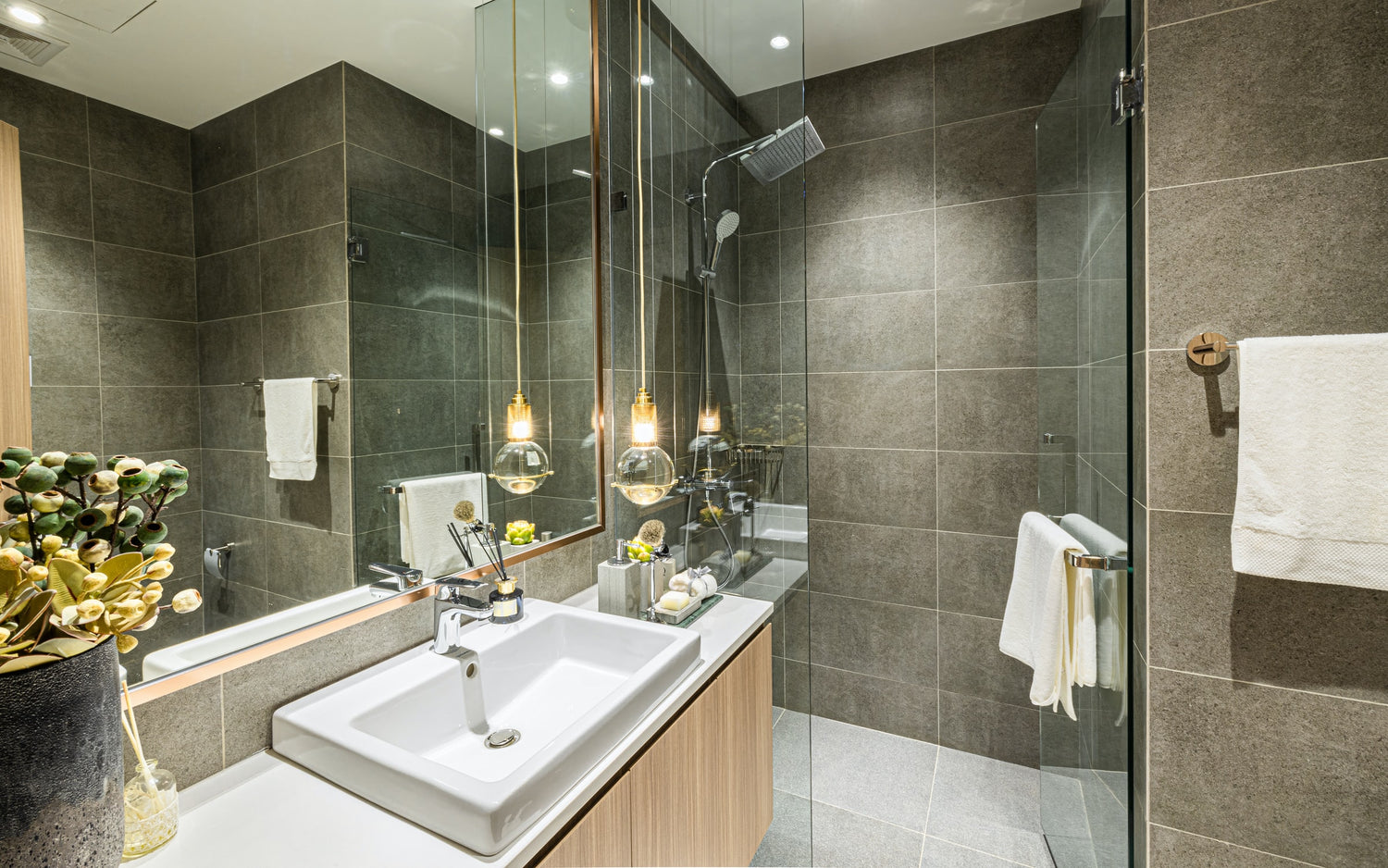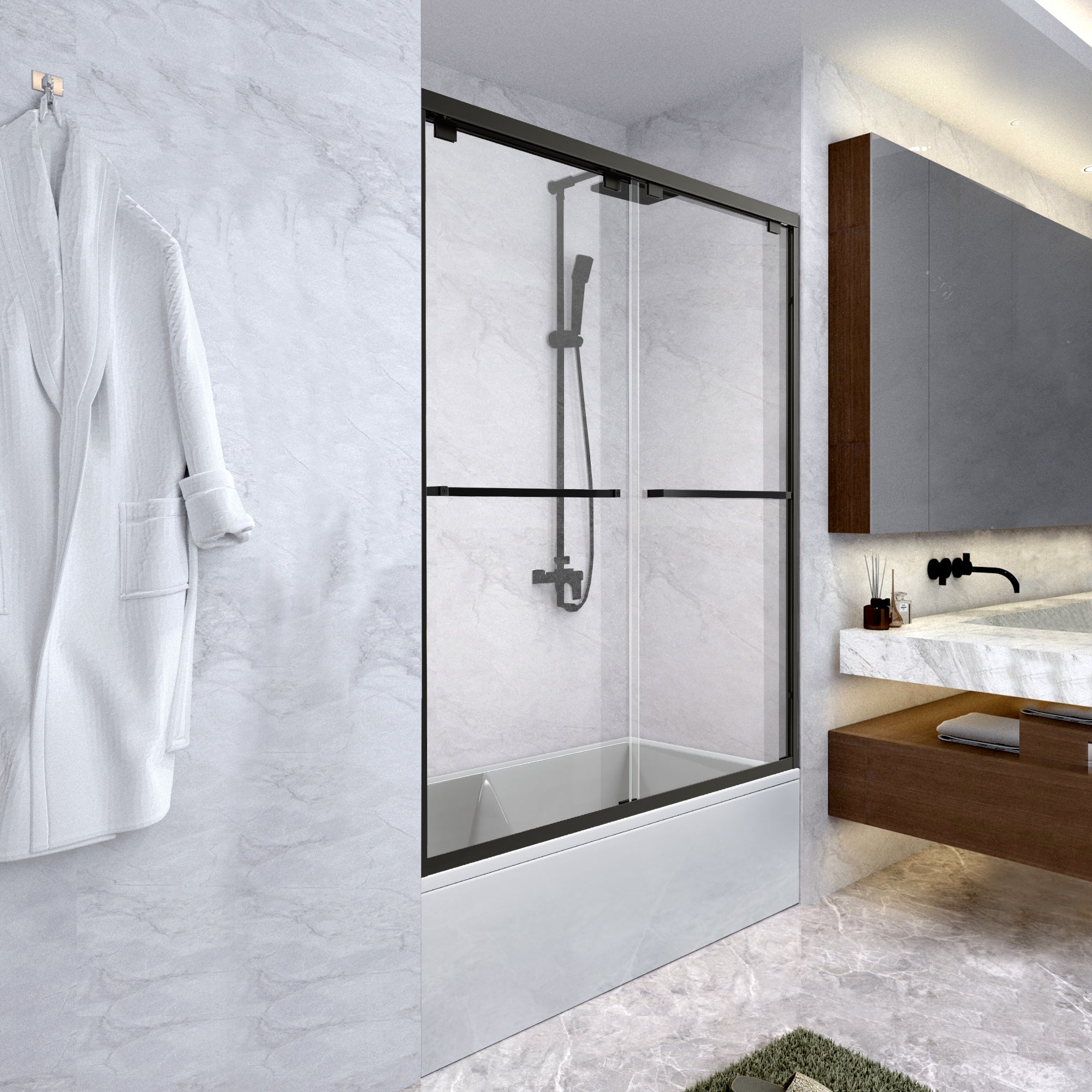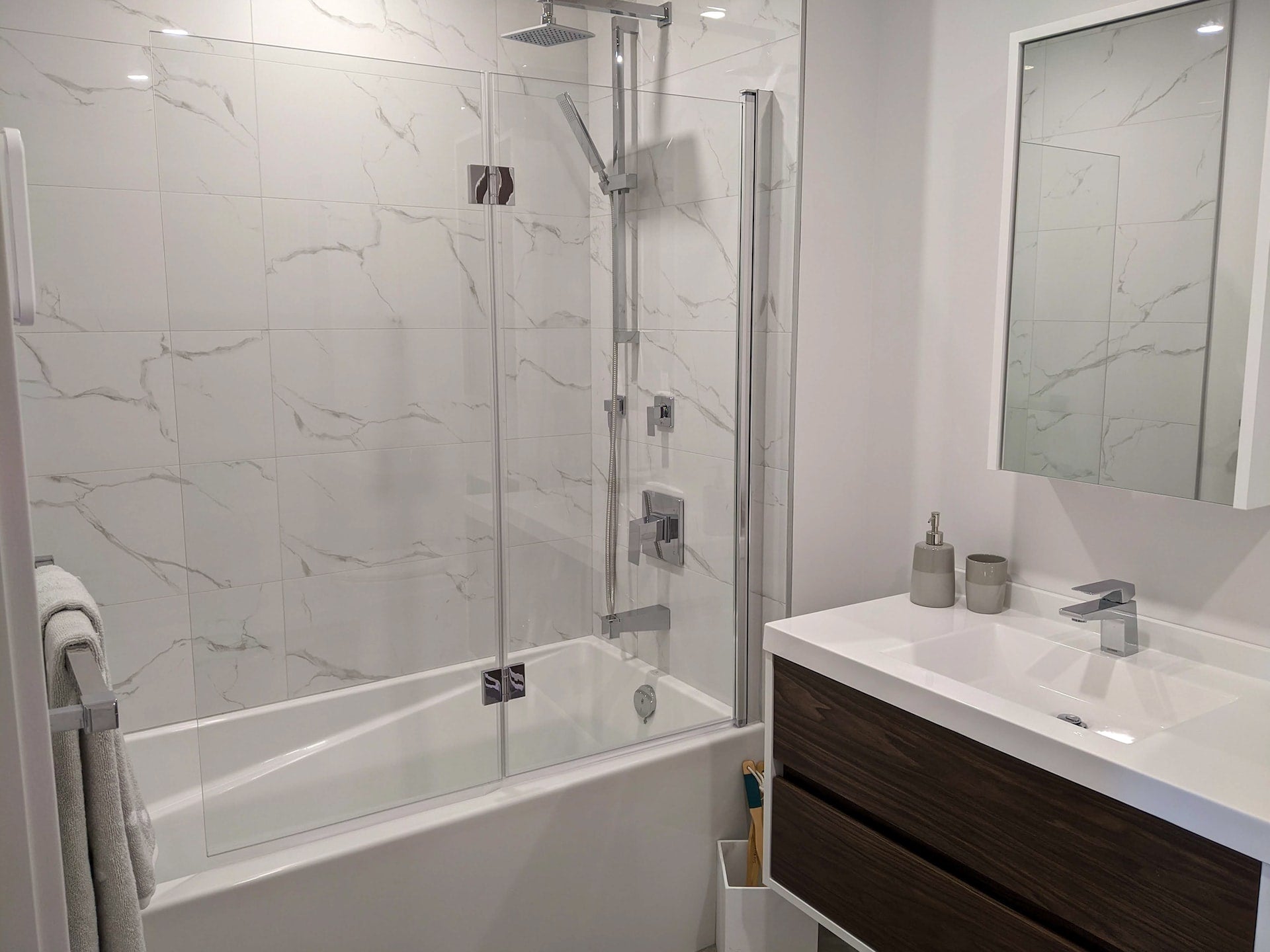Shower doors are panels of glass that permit accessibility to the shower unit and also maintain the water from sprinkling outdoors. Mounting or replacing old glass shower doors can make a big distinction in the appearance as well as functionality of your shower. When you start to purchase your new shower doors, you will promptly see that there are numerous options readily available. Several of these are design choices, and naturally, there will certainly be decisions on what kind of glass you want-- clear, frosted, or etched. Initially, however, you ought to consider much more common concerns of simply what type of shower enclosure you seek.
Below, we'll break down the ins and outs of each sort of shower enclosure and also the variables you need to think about when choosing which is best for your shower room.
Bypass Door(Sliding Door)
Best for: Tub/shower setups; vast shower delays where area space is restricted.
Bypass shower doors are sliding glass shower doors, operating in much the same means as a patio door. Commonly, they contain two moving glass panels that roll on tracks connected to the shower enclosure. Sliding shower doors might simply move in the tracks, or there may be mechanical rollers that assist the activity.
Bypass doors are utilized both on stand-alone showers, along with the shower doors placed on a bathtub in combination tub/shower arrangements. Bypass doors produce effective use of room given that they call for no area for the doors to turn out right into the shower room.
The majority of sliding shower doors have metal tracks that guide the doors, but there are also frameless designs(trackless shower doors) offered, though these are significantly much more expensive. A common tracked moving door is a low-cost, easy shower stalls.
Pros
- Helpful for mix shower/baths
- easy shower stalls
- Mounted designs are among the least expensive of all shower doors
Cons
- Frameless designs are complicated DIY jobs
- Framelesss styles can leakage water
- Tracked doors have metal tracks that are hard to clean
Hinged Door
Best for: Shower stalls where there is lots of area for door swing.A hinged shower door is a glass panel that opens up by swinging in one direction on pivoting hinges, like a regular passage door in your house. The door hinge can be affixed to a stationary glass panel or the wall surface or shower border.
This kind of door is extra typical on stand-alone shower stalls, and also it needs adequate clearance in the restroom for the door to turn exterior. Where this is a problem, you may have the ability to find inward-swinging alternatives.
The majority of hinged doors have lower tracks against which the door rests when in the shut setting. These tracks make complex cleaning up duties and also are not as stylish in appearance as full-pivot doors.
Pros
- Can be a made use of for shower/tub mixes
- Do it yourself installation is easy with mounted designs
- Mounted designs are relatively inexpensive
Cons
- The majority of types have structures that make complex cleansing
- Wet doors leak onto the floor when opened
- Door clearance can be a problem in little bathrooms
Pivot Door
Best for: Modern shower layouts, including bent glass doors.
A pivot shower door is a swinging door that has a pivot hinge enabling the door to open 180 levels in either direction-- inward or outside. The pivot joint can be connected on one side of the door, or it can be center-mounted to develop a revolving shower door. Pivot hinges are the style used on many ultra-modern bent glass shower doors.
These doors are a great selection for curbless showers that are increasingly prominent for residences being adapted to older proprietors who may require mobility device ease of access.
Pros
- Trackless style is simple to clean
- Elegant, low-profile appearance, perfect for luxury baths
- Helpful for curbless, wheelchair easily accessible showers
Cons
- Can be among the extra pricey shower doors
- Difficult DIY setup
- Often leak water
Bath Screen Door
Best for: Minimal spaces.
Bath displays (also called bi-fold or tri-fold doors) include numerous glass panels. Normally one glass panel is repaired while two various other panels fold in on hinges, as screen panels do. In operating, they function much like the folding bifold doors on some storage rooms, and also they are utilized for the very same reason that bifold storage room doors are used-- they make effective use area and do not turn out extensively into the room area.
These are fairly simple shower doors for DIYers to mount, and are typically quite inexpensive.

Pros
- Use area successfully
- Do it yourself setup relatively basic
- Moderate in expense
- Can be an excellent choice for shower/tub combinations
Cons
- Might not be as leak-proof as solid panel doors
- The majority of types need tracks that can be hard to clean
- Even more seams produce a much less elegant look than solid panel doors
Neo-Angle Door
Best for: Corner showers in tiny bathrooms.
For a little washroom, a neo-angle shower door can be an actual room saver, given that an edge shower door configuration cuts across the 90-degree angle developed by a corner shower. For this shower door, there are two smaller sized side panels running perpendicular to two side walls with the door focused in between them. Typically, the door opens out right into the area in a neo-angle door, yet inward-swinging pivot doors are also possible.
These are usually framed-style doors, making them fairly simple for DIYers to install, but complicating cleansing duties.
Pros
Good for corner showers in small restrooms
DIY setup fairly simple for most styles
Disadvantages
A lot of styles have tracks, making complex cleansing tasks
Several kinds are reasonably cost effective
Heavy steam Doors
Best for: Airtight showers with vapor functions.
A steam shower door design is planned to be vapor tight from floor to ceiling and along all joints, allowing a shower to double as a steam bath. To have vapor, the glass panels extend from flooring to ceiling of the shower unit.
The steam door design can be constructed from solid glass panels with a hinged door that has an air-tight seal built in. Typically, a steam shower enclosure has integrated movable panels above the door, called transoms, that can be made use of as vents.
Pros
- Seals in vapor
- Helpful for deluxe washrooms
- Normally trackless, so simple to tidy
Cons
- DIY installment is really difficult
- Most expensive shower door
- Unlikely choice for little bathrooms
Choosing a Shower Door Design
When picking from amongst six common shower door styles, offered area as well as the design of your shower are truly the essential variables, as within each style you can discover a range of options to meet different spending plans.
If area is limited, a traditional sliding door continues to be a good selection, however a pivot door that swings inward might additionally be a much more fashionable alternative. An accordion-style folding door may function well for bigger showers where there is minimal area for a turning door. Edge showers ask for a neo-angle door, while an upper-end shower with a vapor feature requires a closed floor-to-ceiling heavy steam door.
On top of that, numerous shower door styles are available in both mounted styles with tracks, and also trackless styles that install with hinges. Doors with tracks are normally more economical and simpler for DIYers to mount. Ttrackless shower doors are usually more pricey and also more difficult to install for DIYers, but they create a stylish appearance that is perfect for high-end restrooms; trackless designs(frameless sliding shower doors) are likewise simpler to clean, without steel tracks that can trap soap residue and also mold and mildew.

(SL4u Moder balck slik screen corner shower door with bottom Quick-Release Roller to quickly remove the door for bathroom cleaning.)
